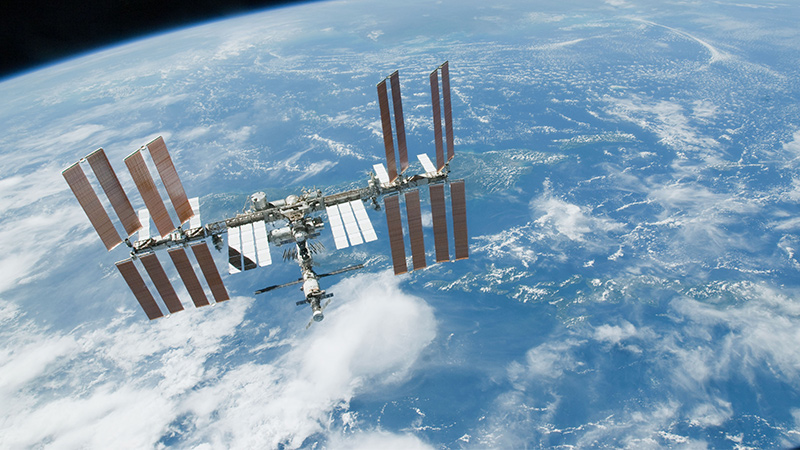Stay Up to Date
Submit your email address to receive the latest industry and Aerospace America news.
Proposal seeks 2025 as year to replace NASA funds for International Space Station with commercial funding
The $19.9 billion White House budget proposal for NASA for fiscal 2019 sets the end of fiscal 2024 as a firm deadline for ending NASA’s direct funding for the International Space Station, proposes $10 billion for human exploration, including starting up a lunar robotic exploration program as a precursor to sending astronauts, and hits Earth science and education hard.
The proposal includes $150 million for a new program geared partly toward encouraging more commercial partnerships on the space station program so that commercial companies will be ready to take over funding in 2025.
Reports that the White House was planning to set a firmer deadline on NASA’s station funding drew strong reactions when news of it leaked in January. “I think it is a mistake to end the ISS to ostensibly fund the exploration program,” former astronaut Leroy Chiao told Aerospace America when asked about the leaked budget proposal.
“The [space station] is part of the exploration program and is an important testing ground for biomedical countermeasures and engineering systems,” says Chiao, who commanded the space station in 2004-2005 and is a member of the Human Exploration and Operations Committee of the NASA Advisory Council. “China’s space station will begin in 2019-2020, so with the loss of ISS in 2024-2025, it will be the only game in town afterward. There will not be as much money saved as believed.”
The Obama administration had encouraged the private sector to become more involved with the space station, but was less emphatic about ending station funding at the close of fiscal 2024. Then-NASA Administrator Charles Bolden in a 2014 blog post announced the Obama administration’s decision to extend direct NASA funding for the space station “until at least 2024” and called the station key to “maintain American leadership in space.”
Boeing, NASA’s prime contractor for the station, has said “continued maintenance and upgrades would extend the station’s lifespan well into 2040.” NASA has determined that extending the lifespan of the U.S.-built modules through 2028 is technically feasible, but that it would need to conduct a study on the potential for any continued use after that.
The Trump administration also proposes cutting NASA’s Earth science budget to $1.8 billion in 2019, down from $1.93 billion in 2017. The 2019 request would eliminate five Earth science projects, including the already constructed Orbiting Carbon Observatory-3 spectrometer that would monitor carbon dioxide levels from space. A report released in January by the National Academies of Sciences, Engineering and Medicine recommended that Congress continue funding these Earth science projects, including the OCO-3, which were funded in the fiscal 2017 budgets.
The request would continue funding for hypersonic flight and NASA’s development of a supersonic plane that would emit no more than a “sonic thump.”
The administration would also cut the $100 million NASA Office of Education, which supports educators and students pursuing science, math and technology projects.
“We can’t do everything, and as always, we’ve had to make hard choices, but we will continue to forge new paths and partnerships that strengthen our industrial base and our engagement with other nations to achieve challenging goals that advance our capabilities and increase our security and economic strength,” NASA Acting Administrator Robert Lightfoot said in a press release Monday.
The entire White House budget proposal is here.
About Tom Risen
As our staff reporter from 2017-2018, Tom covered breaking news and wrote features. He has reported for U.S. News & World Report, Slate and Atlantic Media.
Related Posts
Stay Up to Date
Submit your email address to receive the latest industry and Aerospace America news.




